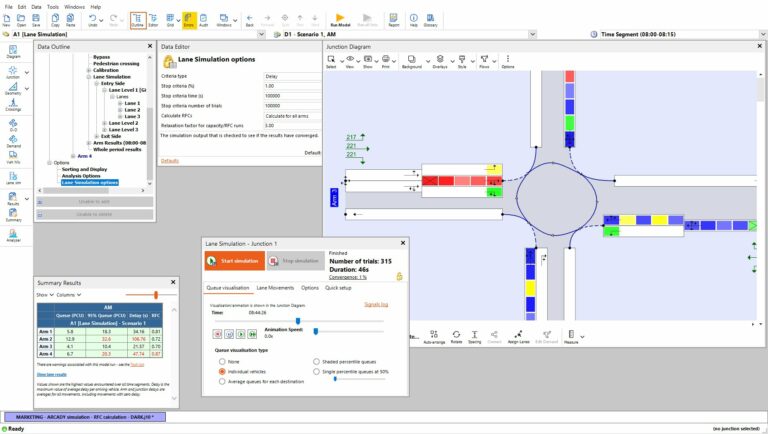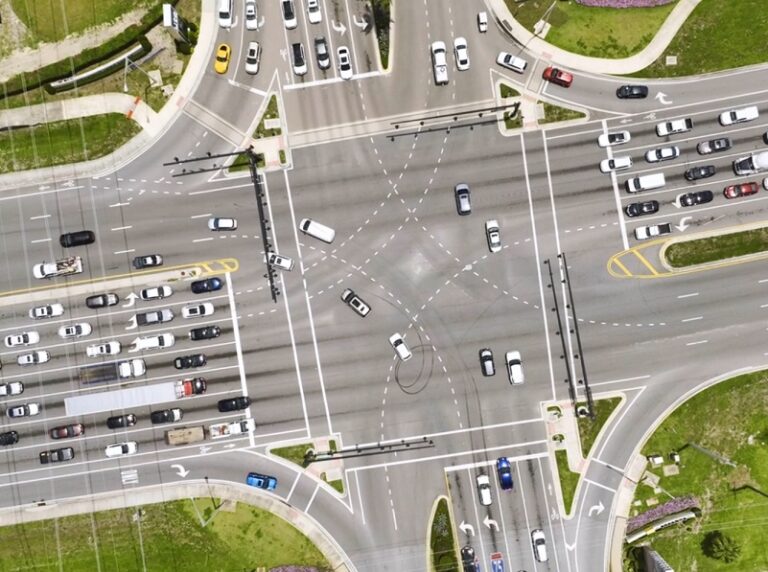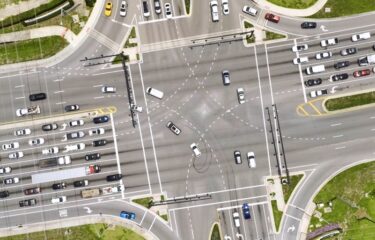Prediction of capacities, queues, delays at isolated signalised junctions. OSCADY is available as the Signalised Intersection Module in Junctions 11.
Click here for a summary of new features in Junctions 11, since Junctions 9.
The OSCADY model calculates capacities, queues and delays for isolated (uncoordinated), traffic signal-controlled junctions. It can evaluate a set of known signal timings, and optionally it can optimise stage lengths and/or cycle time to minimise delay. More recently, an extension to the simulation mode allows the performance of simple adaptive signal control to be estimated.
The signal optimiser in OSCADY is stage-based, but signals data is set up by allocating phases to traffic streams and then adding stages in a similar way to TRANSYT 16. Stages and stage sequences can be generated automatically based on phase allocations and an Intergreen matrix.
What does OSCADY model?
Current Version: 11.1.0
System Requirements
Windows 10 or later
Supported Browsers (Portal only)
Google Chrome (latest version)
Mozilla Firefox (latest version)
Microsoft Edge (latest version)
Training Course Schedule
| Junctions 11 Course (2-Day, Online) 8th - 9th October 2025 at Online (UK time zone) | £760.00 | Full |
| Junctions 11 Course (2-Day, Online) 28th - 29th January 2026 at Online (UK time-zone) | £760.00 |
*The cost is per delegate and excludes VAT
Lane Simulation
Optionally, signalised junctions can be evaluated in Lane Simulation mode which offers additional functionality, such as the ability to model intermittent stages and partially signalised junctions, including signalised roundabouts. In Junctions 10 the simulation mode capability has been extended to allow the performance of simple adaptive signal control to be estimated. This model can be applied to temporary signals (such as at roadworks) and some control over the controller logic is provided in order to mimic behaviour whenever there is no demand at any point within the modelled time period.





